For National Women’s History Month this year, we’re staying rooted in the present to bring you our list of exemplary activists currently making history in the Utah wilderness movement. These are today’s undaunted visionaries: the decision makers, the movers and shakers, the status quo breakers. In other words, they are exactly the strong, creative, impassioned voices we need to bring the movement into the 21st Century and beyond.
As we celebrate these remarkable activists, we also salute the many other cis and trans women and femmes doing vital work to protect our public lands and waters, cultural sites, human health, and global climate through art, activism, science, and civic engagement. Deep gratitude to you all!
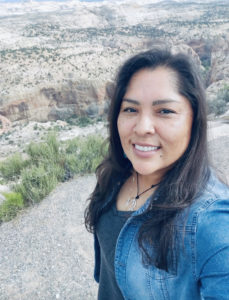 Davina Smith
Davina Smith
Davina Smith is a member of the Diné (Navajo) tribe, and originally from Monument Valley, Utah. She belongs to the Ta’chii’ nii (Red Running into the Water) clan and is born to the Ta’ baa ha’ (Edgewater) clan. She currently works at the National Parks Conservation Association as their organizer/tribal coordinator, where she assists with the protection of Cultural Landscapes of southeastern Utah. Her work supports coalition efforts to develop a proposal to protect the area between Hovenweep, Canyons of the Ancients, and Bears Ears National Monuments—collectively known as the “Lands Between.”
Davina also serves on the board of Grand Staircase-Escalante Partners (Kanab, UT) and Love is King (Portland, OR), and is the CEO of Haseya Native Initiatives LLC. She was a former Executive Director at SLC Air Protectors, where she organized rallies and prayer runs to protect Utah’s sacred landscapes.
Davina is a longtime redrock wilderness advocate who has made her way to Washington, DC several times to support America’s Red Rock Wilderness Act, the Antiquities Act, and Bears Ears and Grand Staircase-Escalante National Monuments. She has run all the way from the Bears Ears buttes of Bears Ears National Monument to the Utah State Capitol in Salt Lake City, carrying medicine and inviting other runners to join her along the way in prayer for the ancestral lands. She is also a founding member of Women for Bears Ears, which seeks to restore Indigenous women’s matrilineal roles as decision-makers, culture bearers, and nurturers of our shared ancestral lands, and of future generations.
Davina’s personal mission is to advocate for Native families in both her rural and urban communities, in addition to preserving and protecting the cultural and natural resources of ancestral Native American lands to benefit and bring healing to people and the Earth.
What achievement are you most proud of in your efforts to protect redrock wilderness?
Davina: When I went to Washington, DC for Wilderness Week, I was one of a few Indigenous people who lobbied for America’s Red Rock Wilderness Act. In meetings, when talking to a senator, representative, or their staff, I noticed how the tone changed when I spoke. The legislators would go from simply being courteous to really listening when I told my story. Sharing my unique perspective and vision for these lands and the importance of protecting the area added another level of passion and significance to the pitch for America’s Red Rock Wilderness Act that only an Indigenous person can provide. The conversation is much more alive when a congressional office hears from someone who is from the area, and whose culture is rooted in the landscape. Once a staffer told me, “I could live through your words.” So from then on I understood how important it is to include Indigenous perspectives in all conservation advocacy.
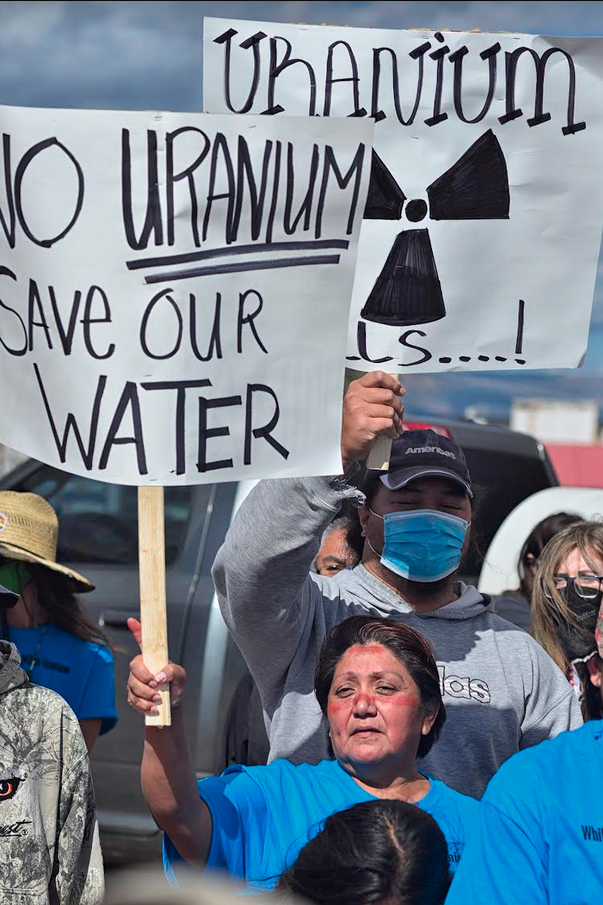 Regina Lopez-Whiteskunk
Regina Lopez-Whiteskunk
Regina is a member of the Ute Mountain Ute Tribe and an advocate for animals and the environment. Born and raised in southwestern Colorado, she attended school in Cortez and traveled to Montana and Illinois to continue her education. She is currently working on obtaining her master’s degree in environmental management.
Regina joined SUWA’s board of directors in 2020. She is a former co-chairperson of the Bears Ears Inter-Tribal Coalition and a former Ute Mountain Ute Tribal Council member. In recent years, she has spoken in defense of Bears Ears National Monument at the Utah Capitol and traveled to Washington, DC to advocate for the protection of Utah’s wild places. She also served on the Colorado Commission of Indian Affairs, is a Women of Bears Ears member/advisor and served on the Montezuma-Cortez School District board.
How does redrock wilderness support you as a leader and community member? In other words, in what ways are you nurtured by redrock wilderness? How does redrock wilderness give you power?
Regina: The redrock wilderness supports me as a leader and community member by embracing me in my human form. It has brought me tears and allowed me to receive strength in the most spiritual way by allowing me to connect with the land respectfully in the manner that my ancestors did over the time spectrum. I understand I am following the footsteps and paths of all those who came before me. It is my responsibility to lend my voice to all that is in our natural world: people, animals, and elements.
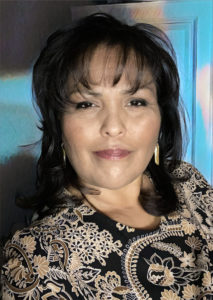 Tara Benally
Tara Benally
Tara is of Hopi descent, and was raised by Navajo. She grew up in San Juan County, Utah. Her family was raised by the Diné Bítahníí clan (folded arms people), born for the Nítłachíí (marks on the cheek people).
Tara is currently field director at the Rural Utah Project, where she leads organizing campaigns to recruit and train new candidates to run for local elected office, and to recruit new Navajo language translators at the Navajo Technical University. She also leads strategic planning, voter registration efforts, google+ addressing, COVID community aid, and other campaigns to improve the quality of life for rural Utahns and residents of the Navajo Nation in Arizona. For this work, she was featured in Time Magazine’s 2020 “Person of the Year” issue, along with colleague Dalene Redhorse.
A longtime defender of Utah’s canyon country, Tara has flown to Washington, DC on many occasions to speak in support of America’s Red Rock Wilderness Act, the Antiquities Act, and Bears Ears and Grand Staircase-Escalante National Monuments. Like Davina Smith, she is a founding member of Women for Bears Ears. She is also a vocal advocate for closing uranium milling operations and cleaning up uranium mining sites in southeast Utah and has spoken on this issue to a sold-out crowd at the University of Utah’s Kingsbury Hall.
Tara ran for a seat on the San Juan County Commission, learning the ins and outs of running for office as an Indigenous woman. The experience helped launch her efforts to run local female office candidates and get more women in elected positions.
What achievement are you most proud of in your efforts to protect redrock wilderness?
Tara: One of my biggest achievements is to let people know that for Native Americans, redrock wilderness, and especially in Bears Ears National Monument, is a place for prayer, a place to gather medicine, and it holds a lot of significance for me as a woman and a Native American. The trails and the sites there are the traces of my ancestors. I am proud to have lobbied with organizations like SUWA. It has given me knowledge of the difference I can make in my community through being involved, how I can make a difference for people of color, and how I can make an impact for people who enjoy the land “in its pristine state,” as my mother says.
Some of my biggest challenges and accomplishments include doing outreach for Utah Diné Bikéyah, advocating for America’s Red Rock Wilderness Act in DC, and being a part of the Rural Utah Project to educate people about civic engagement issues related to public land and to simply help the people in the southern portion of San Juan County and across Utah.
I’m also proud to have been a part of learning to work together as Indigenous nations. We have seven nations in Utah, and all of these public land issues have brought us together to work on land management. My biggest accomplishment in all of this was to be out in the field educating people and getting them to participate in the democratic processes that are not familiar to them. A lot of the time at the beginning, people were discouraged because of language barriers or other issues. So being able to be there, help people understand voting or registration, and then helping them to take part in civic processes is my biggest accomplishment.
It’s so fascinating to me how we all have so much in common with each other, despite the things we put up to make it look like we’re very different. But I’ve met so many people from across the state and can say that we all care about a lot of the same things. This gives me hope. So I just want everyone to realize that our work isn’t done yet. We still need everyone to participate, educate themselves on environmental issues, and get involved.
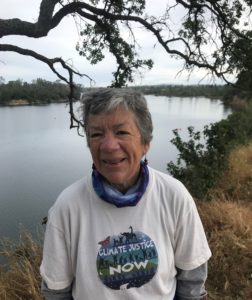 Margie Lopez-Read
Margie Lopez-Read
Margie Lopez-Read is an activist-artist living part-time in Moab and part-time in her home turf on the western slope of the Sierras in central California. She works as a painter, mostly in oil & watercolor to genuinely express her strong sense of feeling for place. It’s clear she takes joy in sharing her love of both places—one dry, rocky and grandiose, the other wet, lush and grandiose—capturing their essence from images painted in plein air or captured by camera for personal interpretation later.
But here’s what makes her stand out among other artists: although she could do quite well for herself by selling her work, she has chosen to funnel all proceeds from her paintings through Donation Art, a unique business model she developed with her husband Bob. Donation Art allows the buyer to purchase a painting by sending a donation to a non-profit organization of the buyer’s choice. The buyer gets the painting, often framed by Margie at her expense, and the money goes entirely to the charity.
Margie became an activist after a long career as an environmental scientist with the California Environmental Protection Agency. She has traveled with SUWA to Washington, DC to participate in Wilderness Week, where she gained valuable experience as a community lobbyist on behalf of America’s Red Rock Wilderness Act. She’s also one of SUWA’s most active “Grassroots Leaders,” participating in various Bureau of Land Management (BLM) comment periods, writing and calling elected officials (often on short notice), distributing SUWA’s Redrock Wilderness newsletter in Moab and central California, and so much more.
What achievement are you most proud of in your efforts to protect redrock wilderness?
Margie: I am going to start off by saying that I do not have an “achievement” in the sense of a project end point. My project has no end point and keeps on bringing me more challenges. But what I am most proud of is my invented method to do good for the world, which includes protecting redrock wilderness.
My husband Bob and I have explored Grand Staircase-Escalante and Bears Ears National Monuments for more than 30 years. Some places we know really well, and others we have yet to get to know. But when I encounter a sacred place that moves my soul, I paint. I share the place through my paintings and write a story to describe it. I then distribute both painting and story through social media and offer them in exchange for donations to a good non-profit. Bob and I call this project “Donation Art.”
My hope is that the 2-dimensional interpretations will help generate respect for these sacred places. Over the years, 100% of the painting sales have turned into donations for so many good organizations, including redrock wilderness protectors like SUWA, Friends of Cedar Mesa, and others.
My most recent focus is on painting portraits of Strong Women. I gift the original painting to these powerful individuals and Bob helps make reproductions which we use to generate funds for good organizations. Some of these Strong Women have great influence in protecting redrock wilderness, such as Deb Haaland, our Secretary of Interior, and Regina Lopez-Whiteskunk of the Ute Mountain Ute Tribe.
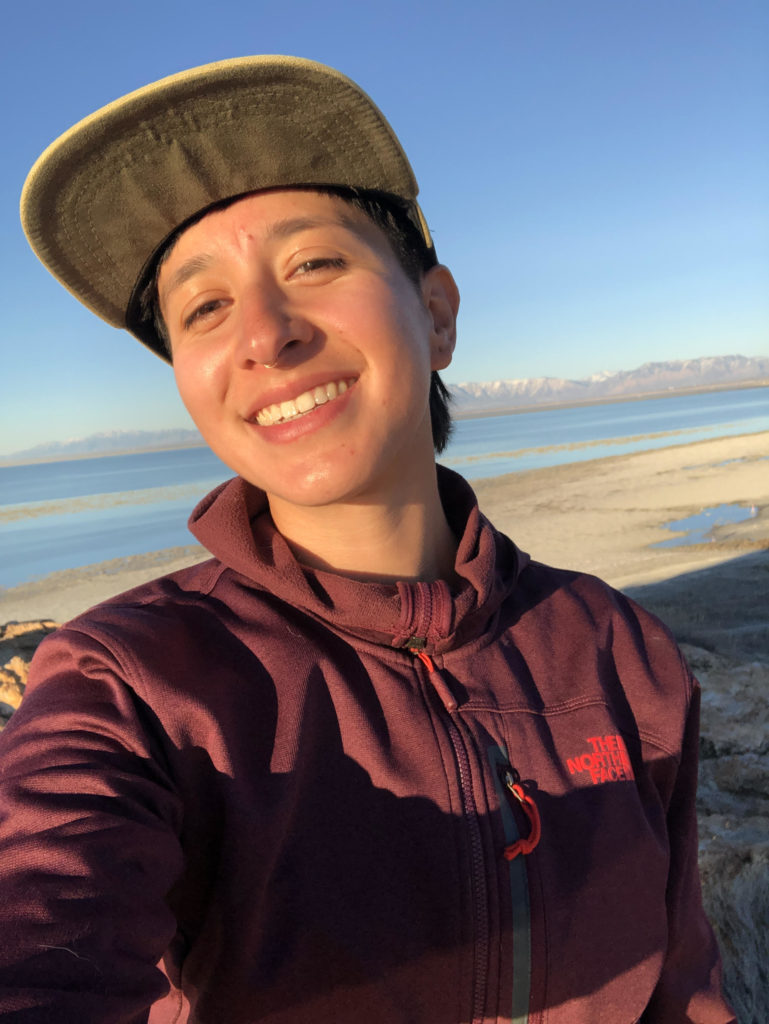 Olivia Juarez
Olivia Juarez
Olivia was born and raised around the Great Salt Lake of Utah and is a daughter of a Chicano, Hispanic, and Mexican family. She has been SUWA’s Latinx community organizer since 2017, leading Latino/a/x-led initiatives to protect wild Utah with seemingly boundless creativity and enthusiasm.
Her projects have included movie screenings, Latino Conservation Week and Hispanic Heritage Month events, community canvases, grassroots outings and activism retreats, several ARTivism events, and most recently convening Latinos for Utah Wilderness monthly meetups. They also translate SUWA’s primary educational materials into Spanish.
In her spare time, Olivia volunteers as a board member of the Utah Coalition of La Raza and is an outings leader for Latino Outdoors Salt Lake City (as well as a founding member). Not surprisingly, they recently made the National Parks Conservation Association’s “10 under 40” list of young leaders around the country who are making a difference in conservation.
How does redrock wilderness support you as a leader and community member? In other words, in what ways are you nurtured by redrock wilderness? How does redrock wilderness give you power?
Olivia: When I take time off to go to southern Utah wild lands, I often have very sleepy experiences. It doesn’t matter what time of year—a warm south-facing sandstone alcove in the winter will make me like a cat napping at a window in the sunlight. And I’ve never been one to turn down an hour of shut-eye if I encounter a cool, flat, and shaded slab of slickrock in a side canyon during the summer. I feel at rest when I am in redrock wilderness (absent the pestering of gnats or mosquitoes, of course). My senses soften, like the rounded layers and waves of sandstone walls worn by a creek. When I sit, it takes no effort to fully rest and let go of tension in my body—probably because there’s nothing about seeing birds flit from one place to another, or listening to the sound of wind through piñon-juniper stands, that causes tension in my mind. I find it’s incredibly easy to be myself in canyon country, especially when being myself means walking softly on a hike; enjoying slow, unhurried mornings; and, of course, napping.
Redrock wilderness experiences can be incredibly restorative. That sets me up to be more effective as an organizer, and more present as a community member.
Distinguished Changemaker Honorary Highlight
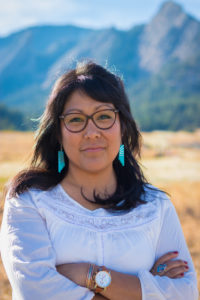 Jaylyn Gough is a photographer, writer, speaker, and the founder of Native Womens Wilderness. Designed to share stories, to learn, and to support other Native Women on the Land, the group was created out of frustration over the lack of Women of Color represented in the outdoor industries, let alone Native Women. Being a woman of color is difficult, but these stories represent the resiliency our Native Women have and how much of it is tied to the Land. An important part of this work is seeking visibility and justice for Murdered and Missing Indigenous Women.
Jaylyn Gough is a photographer, writer, speaker, and the founder of Native Womens Wilderness. Designed to share stories, to learn, and to support other Native Women on the Land, the group was created out of frustration over the lack of Women of Color represented in the outdoor industries, let alone Native Women. Being a woman of color is difficult, but these stories represent the resiliency our Native Women have and how much of it is tied to the Land. An important part of this work is seeking visibility and justice for Murdered and Missing Indigenous Women.
Jaylyn is from the Navajo Reservation and grew up throwing baby rattlesnakes at friends, playing in the arroyos, and doing everything she was told not to do—being a typical Rez kid. She hopes to assist in changing the notion of what outdoor women should look like and has a great desire to see more diversity in our industries.
She has worked with HOKA One One, Mountain Hardware, Vasque, and Backcountry. Her work has been featured in Outside Magazine, National Geographic, and Condé Nast. She is an avid hiker, backpacker, angler, climber, biker . . . you name it and she has probably done it. You can usually find her in the desert or in the mountains with a camera in her hand.

